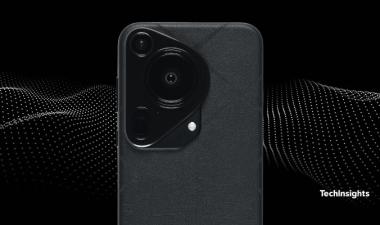Posted: March 15, 2018
Cost Comparison Observations
As we did when the Apple X and Huawei Mate 10 phones were released, we have compiled a brief comparison between some of the biggest flagship phones out there… this time, centred around Samsung’s Galaxy S9+.
Here, we are comparing Samsung’s latest offering with its’ most recent releases – the Note 8 and Galaxy S8+ - and with Apple’s iPhone 8+ and iPhone X.
This comparison is of costs determined at the time of the analysis of each device; costs have not been adjusted to account for the gradual decline in the price of older devices.
| Category | Samsung Galaxy S9+ SM-G965F/DS |
Samsung Note 8 SM-N950F |
Samsung Galaxy 8+ SM-G955F |
Apple iPhone 8+ A1864 |
Apple iPhone X A1865 |
|---|---|---|---|---|---|
| Teardown Date | March-2018 | November-2017 | June-2017 | December-2017 | March-2018 |
| Applications Processor | $52.00 | $52.00 | |||
| Applications/Baseband Processor | $68.00 | $68.50 | $71.00 | ||
| Baseband Processor | $12.50 | $12.50 | |||
| Battery | $5.50 | $4.00 | $4.00 | $4.50 | $6.50 |
| Camera / Image | $48.00 | $40.50 | $32.00 | $35.00 | $43.00 |
| Connectivity | $12.00 | $11.00 | $11.00 | $10.00 | $9.50 |
| Display / Touchscreen | $72.50 | $82.00 | $78.50 | $47.50 | $77.00 |
| Logic | |||||
| Memory: Mixed | |||||
| Memory: Non-Volatile | $12.00 | $21.00 | $22.00 | $21.00 | $19.50 |
| Memory: Volatile | $39.00 | $36.00 | $18.00 | $26.50 | $25.50 |
| Mixed Signal | |||||
| Non-Electronics | $29.00 | $23.50 | $26.50 | $28.00 | $46.00 |
| Other | $15.00 | $16.50 | $15.00 | $15.00 | $18.00 |
| Power Management / Audio | $8.50 | $7.00 | $8.50 | $12.00 | $14.50 |
| RF Component | $23.50 | $19.00 | $18.50 | $23.00 | $22.50 |
| Sensor | $5.00 | $4.00 | $4.00 | $4.00 | $5.50 |
| Substrates | $19.50 | $12.50 | $13.50 | $10.00 | $13.50 |
| Supporting Materials | $9.00 | $9.00 | $8.00 | $7.00 | $7.00 |
| Final Assembly & Test | $12.50 | $14.50 | $12.50 | $16.50 | $17.00 |
| Total | $379.00 | $369.00 | $343.00 | $324.50 | $389.50 |
* Costing note: All cost estimates provided here are compiled using information available to us at the time of the initial teardown. Some assumptions have been made where concrete data is not yet available. We will continue to gather and refine this costing data throughout our on-going deep-dive teardown process and analysis. While we do not expect drastic cost changes, we do expect some adjustments.
Overall Cost of Goods Sold
Only the iPhone X, with its notched AMOLED display, has a higher cost of goods sold (COGS) than the Samsung Exynos 9810-powered Galaxy S9+.
| Phone | Cost of Goods Sold |
|---|---|
| Apple iPhone X | $389.50 |
| Samsung Galaxy S9+ | $379.50 |
| Samsung Note 8 | $369.00 |
| Samsung Galaxy S8+ | $343.00 |
| Apple iPhone 8+ | $324.50 |
Apple phones have the highest and lowest COGS on our list
Comparing Samsung with Samsung
Samsung has invested in a better processor, increased LTE speed, and a better wide angle 12MP camera in the Galaxy S9+ compared to the Galaxy S8+.
The display appears to be a carryover from the Galaxy S8+ with minor changes. The rear glass and main frame are also very similar to the Galaxy S8+ parts.
Samsung is using 3D V-NAND, giving them a cost savings in the non-volatile memory. On the volatile memory, Samsung increased the capacity from 4GB LPDDR4X to 6GB LPDDR4X, which attributes to the higher cost in the S9+.
Regarding RF components, the Galaxy S9+ is an LTE Category 18 device and the Shannon 965 transceiver is about 2X the cost of the LTE Category 16 Shannon 955 found in the Galaxy S8+.
Comparing Samsung with Apple
When compared to the latest Apple offerings, the Galaxy S9+ cost is close to that of the iPhone X, with COGS of $379.00 and $389.50, respectively.
Samsung integrates their LTE modem into their applications processor (Exynos 9810) at a cost of $67.00, while Apple separates them into their A11 processor and Qualcomm MDM9655 LTE modem at a combined cost of $64.50.
In terms of cameras, we believe the Galaxy S9+ cameras are a bit more complex in their design, carrying an increased cost over those in the iPhone X. Samsung: $48.00. Apple: $43.00.
Apple’s notched AMOLED display is slightly smaller, and has fewer pixels, but carried a higher price tag at the time of launch. Samsung: $72.50. Apple: $77.00.
On non-volatile memory, Samsung makes their own 3D V-NAND while Apple buys planar TLC NAND from Toshiba. Planar NAND is more expensive than 3D V-NAND on a cost-per-bit basis. Additionally, Samsung makes their own memory and likely obtains it at a steeply-discounted price. Samsung: $12.00. Apple: $19.50.
For volatile memory, Apple is using 3GB of LPDDR4 while Samsung uses 6GB of LPDDR4X, so Samsung’s cost is understandably higher. Samsung: $39.00. Apple: $25.50.
Apple’s approach to their housings, with a heavy emphasis on machining, gives the iPhone X a significantly higher cost for non-electronic components. Samsung: $29.00. Apple: $46.00.
The display appears to be a carryover from the Galaxy S8+ with minor changes. The rear glass and main frame are also very similar to the Galaxy S8+ parts.







